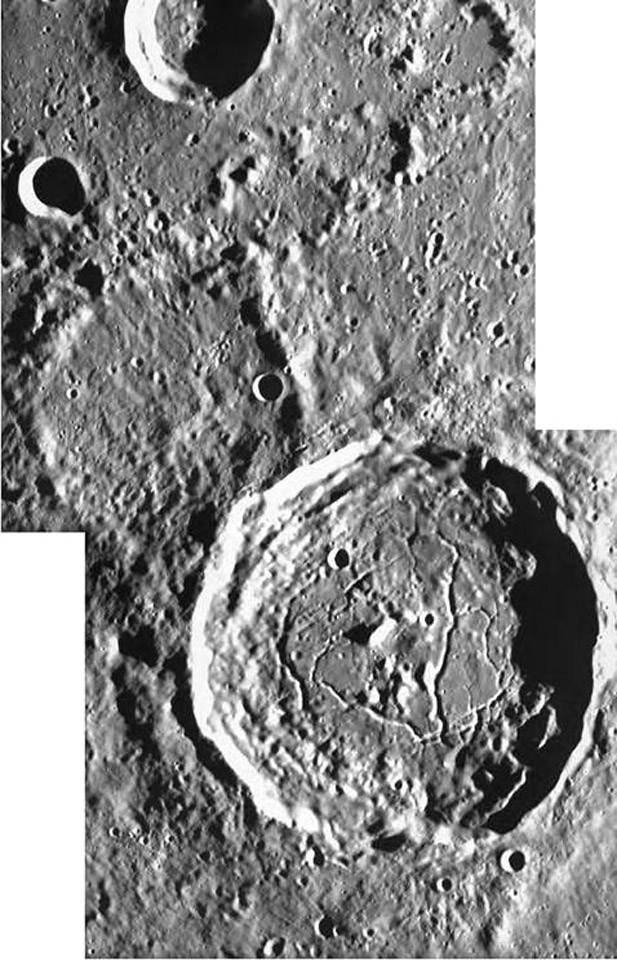
image by ESA/SPACE-X, Space Exploration Institute
Can you image a twin alone? Sabine without Ritter? Atlas without Hercules? Well here is the latter. This is another SMART-1 image that was not released on the ESA website but is on the ESA/SPACE-X site, the company that built the camera. Atlas is 87 km wide with a steep rim crest that gives way to partly slumped wall terraces. The real interest of Atlas is its criss-crossed floor. A strongly defined rille cuts north to south and a narrower family of rilles circles the floor. Atlas is a floor-fractured crater (ffc), as we have said before. But this photo brings to mind another question - what is the nature of the smooth material on the floor of Atlas that is cut by the rilles? Considering that ffc are modified by volcanism - witness the dark halo craters on the northern and southern sides of the floor - the expectation is that the smooth material is volcanic. But a high Sun image shows only the two dark halo craters as dark - the rest of the floor is bright. The smooth material is not mare lava, but could it be lava of a different composition? This is an unanswered question for lunar science.
Technical Details:
3 February 2006. Advanced Moon micro-Imager Experiment (AMIE) camera on SMART-1 spacecraft.
Related Links:
Rükl plate 15
SUPPORT LPOD - VISIT A SPONSOR (CLICK AN AD BELOW)!
Now you can also support LPOD when you buy any book from Amazon thru LPOD!
COMMENTS?
Register, and click on the Discussion tab at the top of the page.



